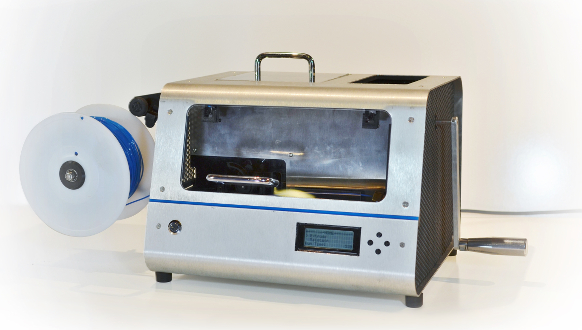Lab machines of the future
Published 23 January 2018 by Nicolas Barrial
No fablab without machines. But how will they evolve? Makery takes a closer look at equipment in digital fabrication laboratories of the near and distant future.
Among the machines the Fab Foundation recommends to its fablabs: laser cutter, vinyl cutter, 3D printer, CNC milling machine… Classics yet mere drops in the ocean of the extraordinary list of tools available at MIT’s Center for Bits and Atoms, the academic birthplace of digital fabrication. From recently chartered to silver-plated, fablabs follow the movement of innovation by renewing their machine park. We saw this in our survey of some 150 labs in France, when we asked about their level of equipment.
We discovered that some labs were even equipped with ceramic printers, circuit printers and bio-printers, reflecting the growing potential of additive manufacturing. As the Imprimer le monde (“Printing the World”) exhibition described it at Centre Pompidou in 2017, we now know how to 3D print ceramic, copper, bronze, concrete, but also microbacteria and even graphene, a material that is lighter than air.
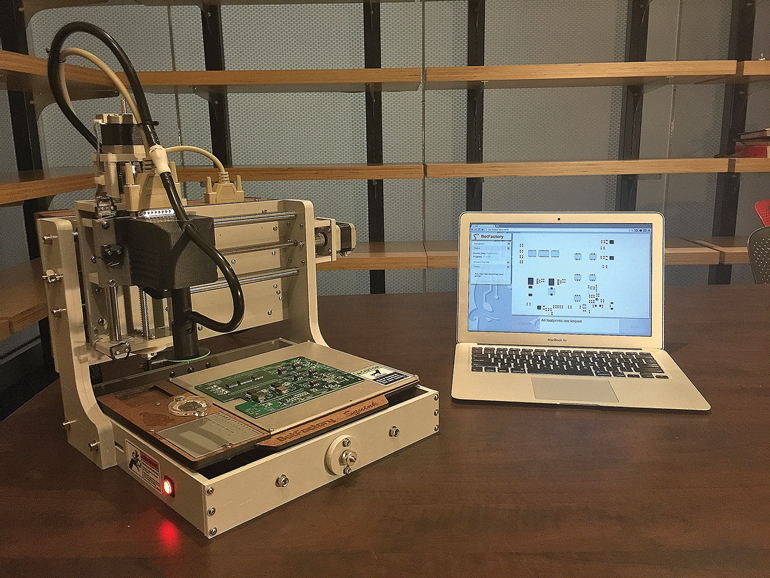
In short, “3D printer” will soon require a suffix to specify the nature of the material it uses. Our investigation also revealed how the old-fashioned laser cutter is getting rolled over by the water jet cutter, which cuts just about anything, and the plasma cutter, faster.

Made in lab
However, now that labs are becoming increasingly specialized (in both projects and equipment), it would be impossible to offer a definitive panorama of all the machines that are present in today’s digital fabrication labs, let alone those of the future. No overview, but a few common points, beginning with the observation that the machines are now destined for more than just prototyping, as projects now live in the labs longer, sometimes up until their launch on the market or the production of limited series. Mathilde Berchon, corporate manager at TechShop Ivry and Station F, as well as a 3D-printing specialist, confirms this “made in lab” trend. The French TechShop’s new antenna at Station F recently opened a “multi-surface customization” space equipped with a dye-sublimation printer (where ink is replaced by wax for much higher image resolutions), a UV printer (which uses UV inks that can print on various surfaces such as plastic), etc.
“Modern times” of 3D printing
Another trend in machines of the future: more production-oriented 3D printing, as 3D printers expand their workspace. This can be seen with conveyer-belt printers such as Blackbelt, or tower-shaped printers such as Delta, which offer a larger volume for printing models in a single piece.
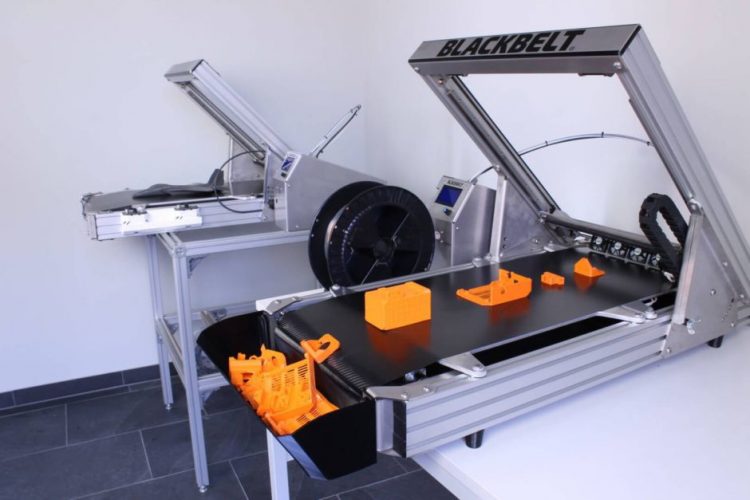
The main setback of 3D printing remains its slow execution. Will the impressive Carbon M1 prototype, the first printer to use the ultra-fast CLIP (Continuous Liquid Interface Production) printing technology, revolutionize the industry? Before fablabs can afford this type of equipment, they seem to be investing in the revival of traditional methods such as plastic injection molding or thermoforming.
Demo of the Carbon M1 printer’s speed by “Tested”:
On the research end, new techniques such as rotational 3D printing could also accelerate the printing of composite materials and reinforce the solidity of materials. The laser cutter is also innovating, in the form of Shaper Origin, the first handheld CNC milling machine that you drive like a Formula 1 car.
Demonstration of the handheld CNC Shaper Origin:
Full metal printer
The next big revolution will be the printing of metal pieces. Massachusetts-based company Desktop Metal promises solutions for cutting and printing metal that are a hundred times faster and ten times cheaper than current factory techniques, using microwave technology. But not until 2019…
Presentation of Desktop Metal’s technology:
Metal printing also requires finer powder for better definition, such as 3D MicroPrint’s solution for printing at a microscopic scale, which was recently presented at CES 2018 in Las Vegas.
Hybrid future
But the sharpest innovation at CES in terms of digital fabrication is the hybridization of subtractive and additive technologies with the Ethereal Halo prototype developed by Ethereal Machines. The Indian start-up received an innovation award for its concept that mixes CNC and 5-axis 3D printer, continuously milling and adding material to the same piece, on a multi-axis machine…
Presentation of the hybrid manufacturing machine Ethereal Halo:
It’s an innovation that goes beyond the other trend of making hybrid machines to gain space and productivity—the all-in-one station that aggregates several technologies, such as laser cutting, 3D printing and plastic injection. These are particularly popular on crowdfunding sites, where it’s easier to fund a compact model. Not to say that there aren’t also flops, like Tribot 3D. Others have been more fortunate, like Snapmaker 3D, which adds 3D printer to laser to cutter to CNC milling.
Machines that make machines
The “all-in-one” was also a theme of the Machines that Make project by Neil Gershenfeld and his Center for Bits and Atoms—low-cost machines produced by existing equipment in the fablabs. The concept, as explained by Nadya Peek, research assistant on the project: “We need to move on from rapid prototyping to the rapid prototyping of rapid prototyping.” More practically speaking, in March 2016 she shared on Makery how to use cardboard to make a CNC.
Self-replicating machines are at the very origin of fablabs, with RepRap (Replicating Rapid Prototyper), designed by Adrian Bowyer in 2005 at the University of Bath in the UK, a largely self-replicating and open 3D printer. Today, RepRap is not only about 3D printers but also CNC milling, and is part of the bigger open hardware movement, which encompasses all technologies and physical products developed under the principles of open resources. Open hardware is also supported by numerous resource websites, such as Wevolver in the UK and Wikifab in France.
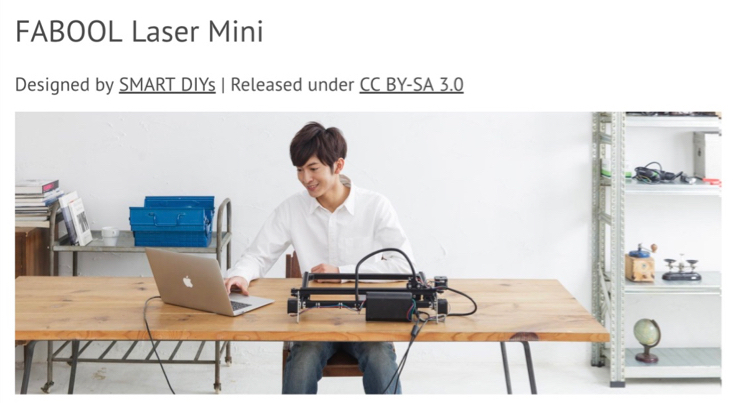
Open hardware also includes the reputedly complex machines of biofablabs, for example, the open source OpenPCR thermocycler.
Upcycling and DIY seem to be key strategies for the future of fablabs, as demonstrated by the DIY vibrating table discovered by Caroline Grellier, our adventurous materials maker, at the Potemat lab in Cotonou, Benin, made from a reclaimed sewing machine motor, or the homemade ceramics printer designed at Les Fabriqueurs in Malakoff, south of Paris.
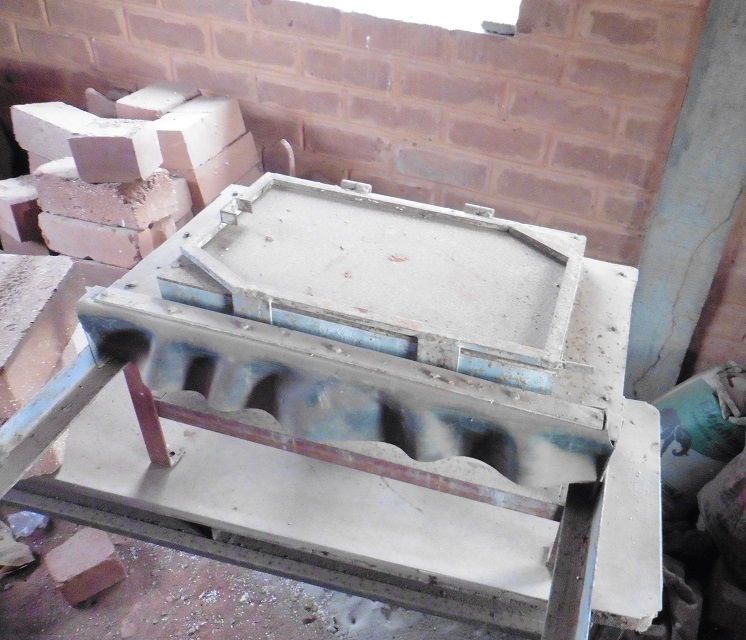
Adding robotic arms
Meanwhile, we humans may soon have to face… the robopocalypse. How about fab managing a team of robots? The first to enter the fablabs are the robotic arms (to be followed perhaps by the head and legs), as machines used to manipulate and automate manual tasks. This trend was humorously illustrated by the Japanese lab Inami Hiyama, which supplemented a human operator with robotic arms.
MetaLimbs, tragi-comic robotization by Inami Hiyama laboratory:
For now, robotic arms are primarily educational tools to teach programming skills, but according to industry 4.0, robotization is at the doorstep of fablabs. Remote-controlled production is another user experience that could develop, renting machine time from a remote fablab and having the results delivered, such as Robochop, which we wrote about after its launch in March 2015. There already exist robotic arms capable of printing and engraving. Some, like Kickstarter-funded Dobot, are even open source.
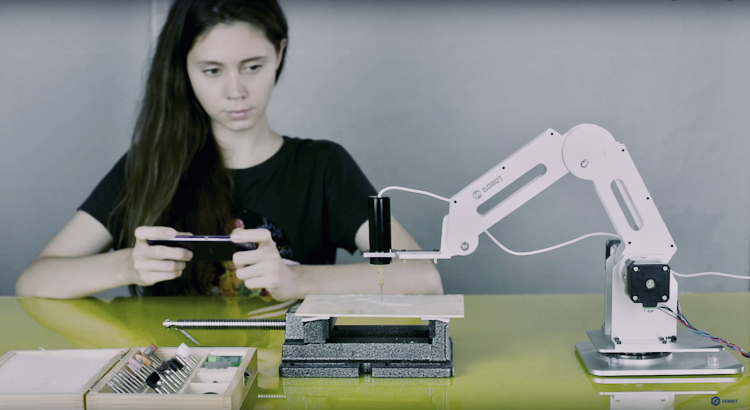
Welcome to virtuotyping
While robots prepare to invade the daily life of labs, humans are jumping head over heels into the matrix. VR headsets, controllers with six degrees of freedom, sensors that liberate you from a sitting position, haptic equipment… virtual and augmented realities are entering the fablabs.
Prototyping a VR headset in the Gravity Sketch software:
Makers, who did everything they could to escape the total computerization of the 1990s, are reinvesting in the immaterial to augment the capacities of CAD. Using sensors, artists and designers can now work with the natural gestures of handcrafted artisanry. Thus, the resulting prototypes live their first life virtually, without using any consumables. Lastly, ensuring rapid transfers between material and immaterial realms, 3D scanners will be increasingly available in the fablabs.
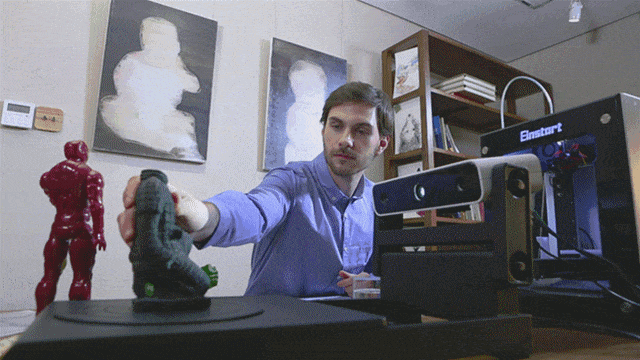
Austere environments
Getting back to the real world of hostile environments, NASA has been experimenting since 2016 with 3D printing in zero-gravity. Planning to set up a fablab inside the International Space Station (ISS), in May 2017 it called for projects to imagine the machines that will accompany humans in their exploration of space. This may well also be the future of labs—equipped with machines that can adapt to any environment.
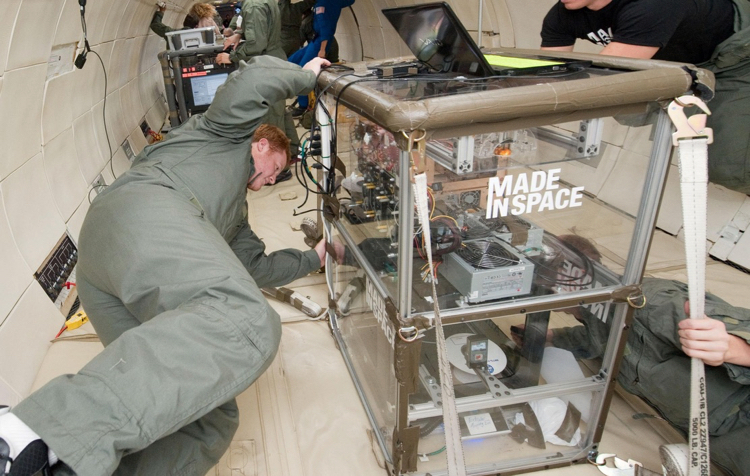
Researcher Dara Dotz, who worked on the design of the 3D printer for the ISS, points out the parallel between adapting the spartan conditions of outer space and those of places that are cut off from resources. She cofounded the NGO Field Ready, which establishes fablabs in disaster areas. In both cases, the machines must be autonomous in energy and operate with on-site resources. The same idea inspired Markus Kayser’s SolarSinter, a 3D printer that he developed while studying at the Royal College of Art in 2011, which prints by piling up layers of sand that are solidified by solar energy—in the middle of the desert.
SolarSinter project, Markus Kayser (2011):
Green fablabs
But before fablabs pop up in the desert and on the dark side of the Moon, makers have other ecological issues to consider, as additive manufacturing in its raw state (of plastic) pollutes. Currently, the use of organically sourced plastics, such as PLA, is encouraged. In the long term, fablabs will be equipped with machines to recycle printing resources. Initiatives like the Precious Plastic network develops prototypes and tutorials to design machines that can recycle and upcycle plastic residue. Just launched, Redetec’s more commercial $1,300 Protocycler converts plastic waste into 3D printer filament.
